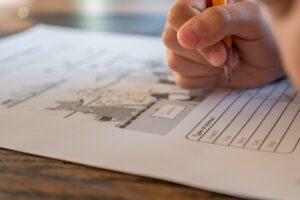MCQs Biology F.Sc. Part 2 ( 2nd Year )
Chapter No.16
Support and Movements
Total MCQs = 165
31. Humerus forms a ball and socket joint with:
(A) Clavicle
(B) Sternum
(C) Innominate
(D) Scapula
Answer:
(D) Scapula
32. The bones of lower arm are:
(A) Tibia and fibula
(B) Radius and ulna
(C) Carpals and metacarpals
(D) Phalanges
Answer:
(B) Radius and ulna
33. Which one of these makes bones hard?
(A) Carbohydrates
(B) Minerals
(C) Proteins
(D) Fats
Answer:
(B) Minerals
34. Which of the following is not part of the axial skeleton?
(A) Sternum
(B) Vertebrae
(C) Femur
(D) Skull
Answer:
(C) Femur
35. In human back bone the caudal vertebrae are reduced to 4 in number and are fused to form the:
(A) Sacnim
(B) Innominatuni
(C) Coccyx
(D) lschium
Answer:
(C) Coccyx
36. Bones are joined to each other at joints by:
(A) Tendons
(B) Ligaments
(C) Hyaline cartilage
(D) Both (A) and (B)
Answer:
(B) Ligaments
37. Muscles are attached to bones by:
(A) Tendons
(B) Ligaments
(C) Synovial membrane
(D) Both (A) and (B)
Answer:
(A) Tendons
38. The joint that allows the skull to rotate on our spine is called:
(A) Hinge joint
(B) Fibrous joint
(C) Sliding joint
(D) Pivotal joint
Answer:
(D) Pivotal joint
39. The intervertebral disks which absorb shock and assist in limited movement of disks:
(A) Collagen fibers
(B) Osieonectin Protein
(C) Cartilage
(D) All (A), (B) and (C)
Answer:
(C) Cartilage
40. The curve in the neck it’s composed of seven vertebrae and is known as the:
(A) Lumbar region
(B) Sacral region
(C) Coccygeal region
(D) Cervical region
Answer:
(D) Cervical region



